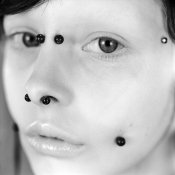Claudia Moroni
Member
i think it's a reaction (over?) to the point and shoot digital camera trend -- folks are so used to seeing everything, near and far, in sharp focus because p and s digital cameras are pinhole cameras, pretty much...or at least have the same DOF of a Minox camera.
So when they see actual depth of field effects -- selective focus! -- they think it is something nifty and cool and want to do it more.
THIS! I couldn't agree more.
I think that people see selective focus as more "arty" also because it's pretty specific to photography. Our eyes do focus selectively, but we hardly ever notice because of the way our vision is processed in the brain, so seeing pictures with a prominent out of focus area can be pleasing and "different" from the norm.
Narrow DOF portraits are terrible with one eye in focus and the other not.
I personally don't have a problem with having one eye in focus and not the other, as long as the focus is on the eye closest to the camera, like the two examples below.


Am I the only one?
Maybe it's people shooting 35mm who are having this issue? It's hard enough to get large DOF with medium format camera and standard lens, I will not even mention LF.
I agree, I used to be much more in love with shallow depth of field when I used to shoot 35mm. Now that I often battle with it using medium and large format cameras, I'm less of a fan


 So from personal experience, I'd say it's just one of those 'quality' infatuations that people are afflicted with against their better judgement, particularly with a recent step up in format.
So from personal experience, I'd say it's just one of those 'quality' infatuations that people are afflicted with against their better judgement, particularly with a recent step up in format. 

